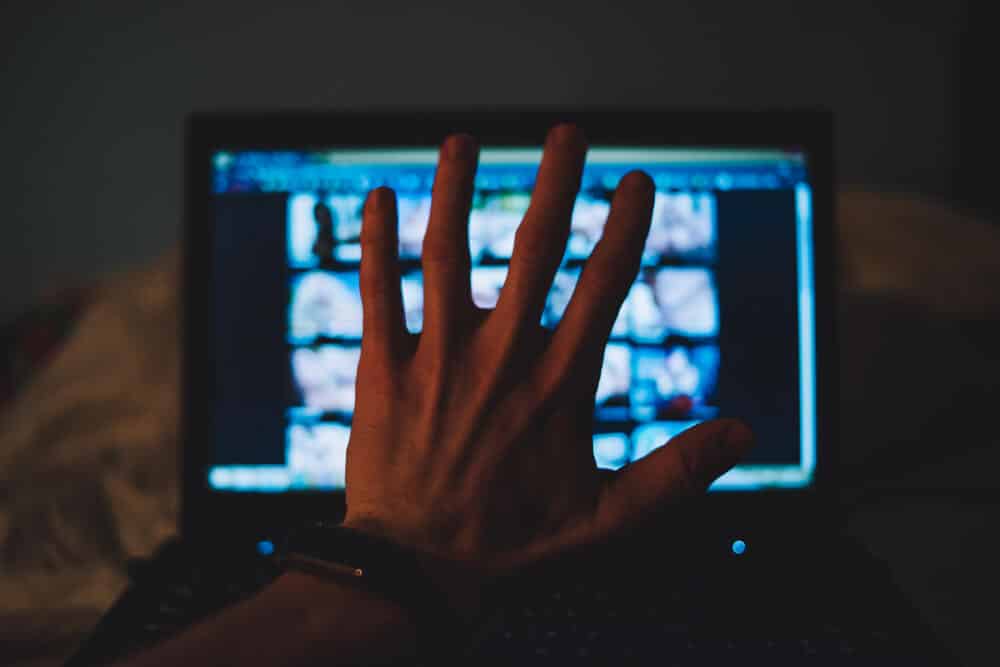Pornography has been a part of the human condition since before recorded history. And even since the beginning, it’s been controversial. Some like it, others don’t. Some people find it highly offensive, while others can’t function without it every day.
Due to most people’s (understandable) reluctance to talk about it, it’s hard to put an exact figure on how many people have a problematic relationship with pornography. However, best estimates put the number of people classified as “porn addicts” in the United States at around 200,000.
But why do some people struggle to control their urges for pornography? And is there any way to treat porn addiction?
Understanding Porn Addiction
While the term “porn addiction” is colloquially understood by most people to categorize a situation in which someone feels a compulsion to view pornographic material, whether or not it’s a true condition is up for debate.
Like other behavioral addictions, the American Psychiatric Association doesn’t recognize it as an official diagnosis. Even so, there are elements of porn addiction that most psychiatric professionals agree on.
Common symptoms of porn addiction:
- Spending a large portion of the day watching porn
- An inability to stop viewing porn despite previous attempts
- Cravings to view pornographic materials
- Getting angry or hostile when asked about porn viewing habits
- An increase in the amount of time needed to gain the same satisfaction
- Loss of interest in sexual relationships with real people
- Abandonment or neglect of social activities in lieu of viewing porn
- Hiding porn habits from others
The symptoms of porn addiction mirror those of substance addiction to a tee, and that shouldn’t come as a big surprise. Certain behaviors, like viewing pornography, trigger some of the same areas of the brain and release “feel-good” neurotransmitters much like a drug. And when this process is repeated, it conditions the brain to want more, which is the main mechanism behind addiction.
How addictive is porn?
Pornography can be considered highly addictive due to the release of dopamine in the brain that it triggers. This neurotransmitter is associated with pleasure and reward, and its release can create a strong craving to repeat the behavior that caused it. Additionally, compared to substances or alcohol, porn is often more easily accessible to certain individuals, making it potentially more tempting to indulge in frequently.
Are sex addiction and porn addiction the same thing?
Sex addiction and porn addiction share some similarities but are not exactly the same thing. While both involve compulsive and unhealthy sexual behaviors, they are not considered official diagnoses in the DSM-5.
Sex addiction can manifest in various forms beyond pornography, such as excessive masturbation, engaging in sexual fantasies, or pursuing other sexual activities. Individuals with sex addiction often experience a loss of control and are consumed by their sexual desires, which negatively impacts their personal and professional lives.
On the other hand, porn addiction specifically refers to an excessive and uncontrollable consumption of pornography. It involves a compulsive need to view explicit sexual material, leading to negative consequences in various areas of life. Porn addiction can also lead to an escalation of behaviors, seeking more extreme or taboo content to achieve the same level of arousal.
While porn addiction can be a type of sex addiction, the latter encompasses a broader range of compulsive sexual behaviors beyond just pornography consumption. It is important to note that the distinction between these terms may vary depending on individual perspectives and professional opinions.
How to stop a porn addiction
Like any other addiction, quitting can be difficult, especially when people attempt it on their own. But there are some things you can do to try and break the habit.
Here are a few things experts recommend:
- Delete any pornographic videos and images in your possession.
- Clear out your entire internet browser history.
- Remove any bookmarks or other saved porn websites.
- Discard any physical pornographic materials (photos, DVDs, tapes, etc.).
- Ask someone you trust to install anti-porn software on your electronic device(s) and keep the password secret.
- Make a list of reasons why you want to quit and keep it on you to refer to when you feel the urge to watch pornography.
- Make a list of the things that trigger your urges and try to avoid them.
- Find specific activities that you can do when you get the urge to watch porn.
Are there treatment options available for porn addiction?
Though the APA doesn’t recognize porn addiction as an official diagnosis, the good news is that it can be treated in much the same way as substance addiction.
Therapy – Seeking the help of a mental health professional is by far the best option and will be especially helpful for those who also exhibit signs of anxiety, depression, or other obsessive-compulsive type behaviors.
Depending on the severity of your porn addiction and the impact it has on your life, a therapist may recommend a variety of options, including individual, group, or family counseling, medication, and/or behavioral therapy.
Support groups – A lot of people find support groups helpful as they try to stop their porn addiction. Speaking with others who are going through the same struggles can be grounding, and they can also offer their own tips and advice on things like avoiding triggers, dealing with cravings, and generally avoiding relapse.
You can ask your primary care physician or mental health professional for information on pornography or sex addiction support groups, and you can also find support groups and other resources online.
Medications – Treatment for pornography addiction usually involves a combination of psychological counseling and behavioral therapy, and medications aren’t typically a part of the equation. However, addiction and compulsion are often accompanied by other co-occurring mental health conditions such as depression, anxiety, or obsessive-compulsive disorder (OCD) – known as dual-diagnosis disorders.
These co-occurring conditions may be treated with appropriate medication, and this can have a positive effect on the addiction/compulsion as well.
What’s the harm of leaving porn addiction untreated?
Left untreated, addictions and compulsions can become truly disruptive influences on a person’s life. Many areas of life can be affected, including a career, physical and mental health, your finances, and, in particular, your romantic and sexual relationships.
Most experts agree that an unhealthy relationship with pornography often leads to lower self-esteem, difficulty forming and maintaining relationships (especially sexual relationships), and lower sexual satisfaction overall.
Get Help for Porn Addiction with Enterhealth
Not everyone who watches porn has a problem. But if you or someone you love has tried to stop viewing porn and can’t, we urge you to reach out to us. Our mental health professionals are specially trained and experienced in treating addictions and compulsive behaviors of all kinds.
We offer inpatient, outpatient, and even virtual treatment options, and all patients receive a customized treatment plan that’s uniquely tailored to address the physical, mental, emotional, and spiritual elements that caused or accompanied their addiction.
Call us at 800.388.4601 today or fill out the form on our contact page today to get help overcoming pornography addiction.




